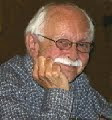Reflections on Online ELT, Part 1
As I look back on the online presence of ESL- and EFL-focused materials over the years, I realize that there have been a lot of changes.
The 80s and early 90s: Computers Become Established
From 1977 to 1983, I worked for a for-profit chain of ESL schools at its (then) headquarters in the Los Angeles area, first in materials development and teacher training as part of its Curriculum Development department, later as a textbook editor for its publishing division. Of course, computers existed then, but during the 70s, they were big and bulky. I remember that toward the end of my time with the company, it bought desktop PCs for the top managers and eventually installed a word-processing system (with a single operator for the entire company!). That was big stuff then. By the end of the 70s and the early 80s, however, computers as we know them today were beginning to come into their own.
In 1983, I left Los Angeles and went to the Oregon Coast to work for a well-known ESL/EFL author on a materials-development team. Although I originally expected to be in Oregon for only about two weeks, I decided after seven weeks to move there—and stayed until 1990.
The author was interested in gadgetry and had been using a computer for some time to create his manuscripts, but there was more: almost everyone on the team used a computer for writing, creating logs, and other tasks. I didn't; fearing the unknown, I was reluctant to give up my trusty typewriter. In time, though, I had no choice but to use one of "those machines" because it was the only way I could keep up with the work.
Eventually, I became comfortable with computers. At one point, when my task was to use an indexing program, I even used two monitors simultaneously! Also, my boss lent me his Kaypro "portable" (or, as one source described it, "luggable") to use at home. All the computers I used at that time were DOS machines. I did text-based work almost entirely then, and used WordStar (with its hundreds of keyboard commands) for word processing.
Desktop computers were becoming popular by the 80s, and a lot of educational software (most of it of the "drill and kill" variety) was developed. The Net and Web didn't really exist for the public at large, however, and e-mail wasn't used much outside of the military and research institutions. The author that I worked for, for example, used a telex for his overseas communication.
When I first moved to Oregon, I lived and worked on the coast. Later, my boss opened an office in Portland. For a while, I stayed on the coast and drove to Portland once a week. Later, I moved to Portland and worked in the author's offices there.
By the late mid 80s, desktop PCs were pretty common in business and schools. Not long after I moved to Portland, I remember having to learn how to use a Mac because a new program called PageMaker had just come out and the author wanted to use it to create camera-ready copy for his books instead of word-processing the manuscripts, inserting special codes for different font styles, and then sending the floppy disks (and yes, they were still floppy) to the publisher as he had done previously. I didn't like the Mac at first: it seemed too "cute" to be "a serious computer." Because Macs were at that time the tool of choice for people involved in text work and graphics, however, I began using one exclusively.
By the end of the 80s, desktop computers were fully established, and I had bought my first computer (a Mac SE) and, shortly thereafter, my first laser printer (an Apple LaserWriter IINT). The Web and Net, however, were still things that only "visionaries" were talking about.
How things have changed!


0 Comments:
Post a Comment
<< Home